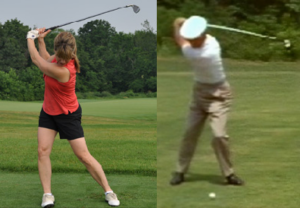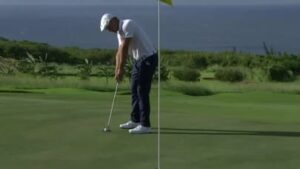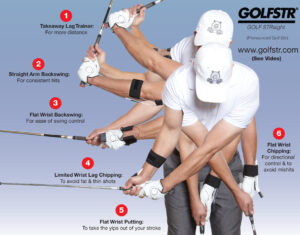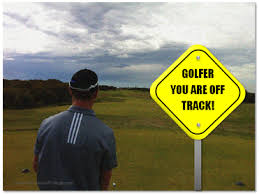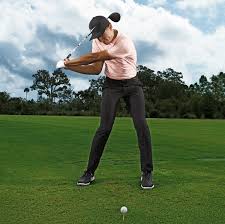Several years back, Dr. Bob Rotella had an article featured in Golf Digest that basically said: “Your muscles have no capacity to remember anything.” The only Muscle Memory resides in your brain. So the only “muscle” that really counts is the one between your ears. It’s your brain filled with bad memories playing in your head that creates bad shots. Wouldn’t you like to force your brain to only use good thoughts for great shots?
It really doesn’t matter how much you practice or even how great your swing may already be. If your mind isn’t letting your body function properly, then you will mess up your swing every time. Of course repetition of great swings with great results give you a lot of positive thoughts. So if your head is filled with bad thoughts, then your game will likely be filled with bad shots. Your task is to find a way to block out the bad thoughts.
Case in Point:
I love to golf but I also play tennis. When I need to make a great second serve my mind often recalls the serves that I hit into the net. Sure enough, it happened again. Yesterday I was playing a doubles tiebreaker where it was my serve and I had to make 2 serves to win the match. My partners said “hit your serves to the backhand!” This is the only thought that was in my mind. I nailed 2 serves to the backhand of both players and took the final 2 points to win the set and match. I forgot to think about my historic bad thought of hitting into the net. My focus was on my positive thought to nail a slice serve to the backhand of my opponent. That positive thought proved to be the winner.

Unleash your hidden tiger.
We all need to replace bad thoughts with positive thoughts. That’s why Jack Nicklaus and Jason Day visualize the shot that they know they have hit many times before. They visualize the ball flight. You need a positive mental attitude. Just calm your body and swing with a controlled backswing to create lag and then release through the ball. CALMING YOUR MIND and BODY are KEY!
Keep your eye on the ball and take that relaxed swing from the driving range along with you to the course. Your goal is a smooth-swing-rhythm to a balanced finish. Swinging to kill that ball is the one thought that should NEVER ENTERS INTO YOUR MIND. Relax your shoulders and feel your weight shift forward as you transition into your down swing and into a balanced finishing pose. When you focus your mind to swing to a final balanced pose, direction will take care of itself and distance will be generated naturally.

You can: Just do it! Finish your swing in balance.
Trick to Eliminate Bad Thoughts Focus on your balanced finishing pose. If you do everything right in your swing, you can’t help but finish in balance. [There is no time for bad thoughts to enter your mind.] If your focus is to end up in balance, your mind won’t let you take a killer swing. The only way that I can swing to a balanced finish is to take more club than I need and give myself time to finish my backswing as I transfer my weight to my leading foot. Voila! I finish in balance and execute the perfect swing and shot.
Focus on the end result where you finish your swing in balance on your leading foot. It’s all about a smooth swing to finish in balance. The pros do it and you’ve seen Ernie Els do it. [Get Nick Price’s rushed swing and John Daly’s super windup out of your mind.] Use the swing that will allow you to finish in balance as you enjoy watching the amazing flight of your ball flying to your target. Practice with GOLFSTR+. Buy one today at www.golfstr.com



